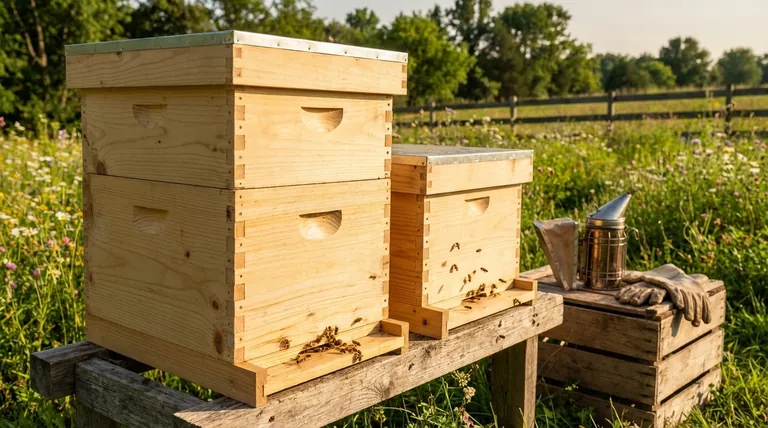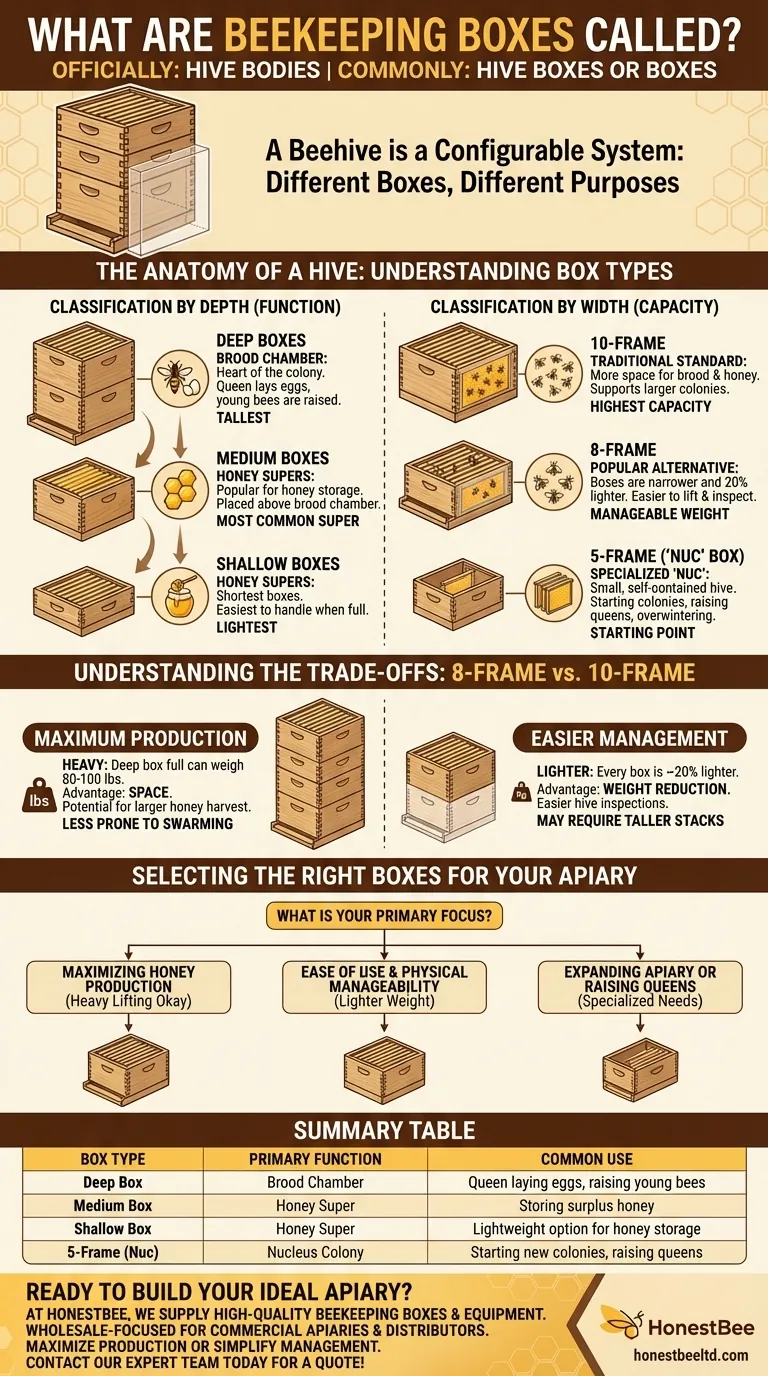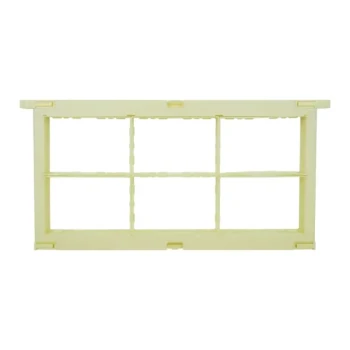The boxes used in beekeeping are officially called hive bodies. More commonly, beekeepers refer to them simply as "hive boxes" or just "boxes." These modular, stackable containers hold the frames where bees build comb, raise their young, and store honey, forming the core structure of a modern beehive.
A beehive is not a single entity but a configurable system. The key is understanding that different boxes serve different purposes, categorized by their depth (function) and width (capacity), allowing a beekeeper to adapt the hive's size and structure throughout the season.

The Anatomy of a Hive: Understanding Box Types
A beekeeper configures a hive by stacking different types of boxes. The choice of box depends on its intended purpose, whether it's for the queen to lay eggs or for the workers to store a surplus of honey.
Classification by Depth (Function)
The height of a box dictates its primary role within the hive.
- Deep Boxes: These are the tallest boxes and form the brood chamber. This is the heart of the colony, where the queen lays her eggs and the young bees (brood) are raised.
- Medium Boxes: Often called "honey supers," these are a popular choice for honey storage. They are placed above the brood chamber for the bees to fill with surplus honey.
- Shallow Boxes: As the shortest boxes, these are also used as honey supers. Their lighter weight makes them the easiest to handle when full of honey.
Classification by Width (Capacity)
The width of the box determines how many frames it can hold, which relates directly to the hive's total population and storage capacity.
- 10-Frame: This has been the traditional industry standard for decades. It offers more space for both brood and honey, supporting a larger colony.
- 8-Frame: This has become a very popular alternative. While it holds less, the boxes are narrower and significantly lighter, making them easier for the beekeeper to lift and inspect.
- 5-Frame ("Nuc" Box): This is a much smaller, specialized box. A "nuc," or nucleus colony, is a small, self-contained hive used for starting new colonies, raising queens, or overwintering spare colonies.
Understanding the Trade-offs: 8-Frame vs. 10-Frame
Choosing between an 8-frame and a 10-frame system is one of the first major decisions a new beekeeper makes. There is no single "correct" answer; the choice depends entirely on your goals and physical abilities.
The Case for 10-Frame Hives
A 10-frame deep box full of honey and brood can weigh nearly 80-100 pounds. This system is built for maximizing population and honey production.
Its primary advantage is space. A larger colony has the potential to bring in a larger honey harvest and may be less prone to swarming if managed properly.
The Case for 8-Frame Hives
The 8-frame system was designed for easier management. Every box, whether full of brood or honey, is about 20% lighter than its 10-frame equivalent.
This significant weight reduction makes hive inspections and harvesting far more manageable, especially for beekeepers who want to avoid heavy lifting. The main trade-off is that a strong colony may require taller stacks to provide adequate space.
Selecting the Right Boxes for Your Apiary
Your choice of equipment should align with your beekeeping philosophy and physical comfort.
- If your primary focus is maximizing honey production and you can manage heavy lifting: The 10-frame system offers the most space for large, productive colonies.
- If your primary focus is ease of use and physical manageability: The 8-frame system is significantly lighter and makes hive work less strenuous.
- If your primary focus is expanding your apiary or raising queens: Incorporating 5-frame nuc boxes into your operation is an essential and powerful tool.
Understanding these modular components empowers you to build a hive that is perfectly suited to your bees, your environment, and your personal beekeeping goals.
Summary Table:
| Box Type | Primary Function | Common Use |
|---|---|---|
| Deep Box | Brood Chamber | Queen laying eggs, raising young bees |
| Medium Box | Honey Super | Storing surplus honey |
| Shallow Box | Honey Super | Lightweight option for honey storage |
| 5-Frame (Nuc) | Nucleus Colony | Starting new colonies, raising queens |
Ready to build your ideal apiary? At HONESTBEE, we supply high-quality beekeeping boxes and equipment to commercial apiaries and distributors. Our wholesale-focused operations ensure you get the durable, modular hive components you need to maximize honey production or simplify hive management. Let us help you configure the perfect hive system for your goals. Contact our expert team today for a quote!
Visual Guide

Related Products
- Langstroth Honey Bee Box Hive Boxes for Different Depths
- Australian Langstroth Beehive Boxes for Beekeeping Wholesales
- HONESTBEE Professional Long Handled Hive Tool with Precision Cutting Blade
- Portable Bee Mating Hive Boxes Mini Mating Nucs 8 Frames for Queen Rearing
- Professional Insulated Plastic Bee Hives
People Also Ask
- What are the sizes available for Langstroth boxes? A Guide to 8-Frame vs. 10-Frame & Depths
- How does a hive box work? A Guide to the Langstroth Hive System for Beekeepers
- How is checking honey supers in a Langstroth hive different from inspecting Honey Flow supers? A Guide to Disruptive vs. Non-Invasive Methods
- How deep is a medium bee box? Unlock the Key to a Versatile and Manageable Hive
- What is the purpose of the boxes in a Langstroth hive? A Guide to Modular Beekeeping Success



















